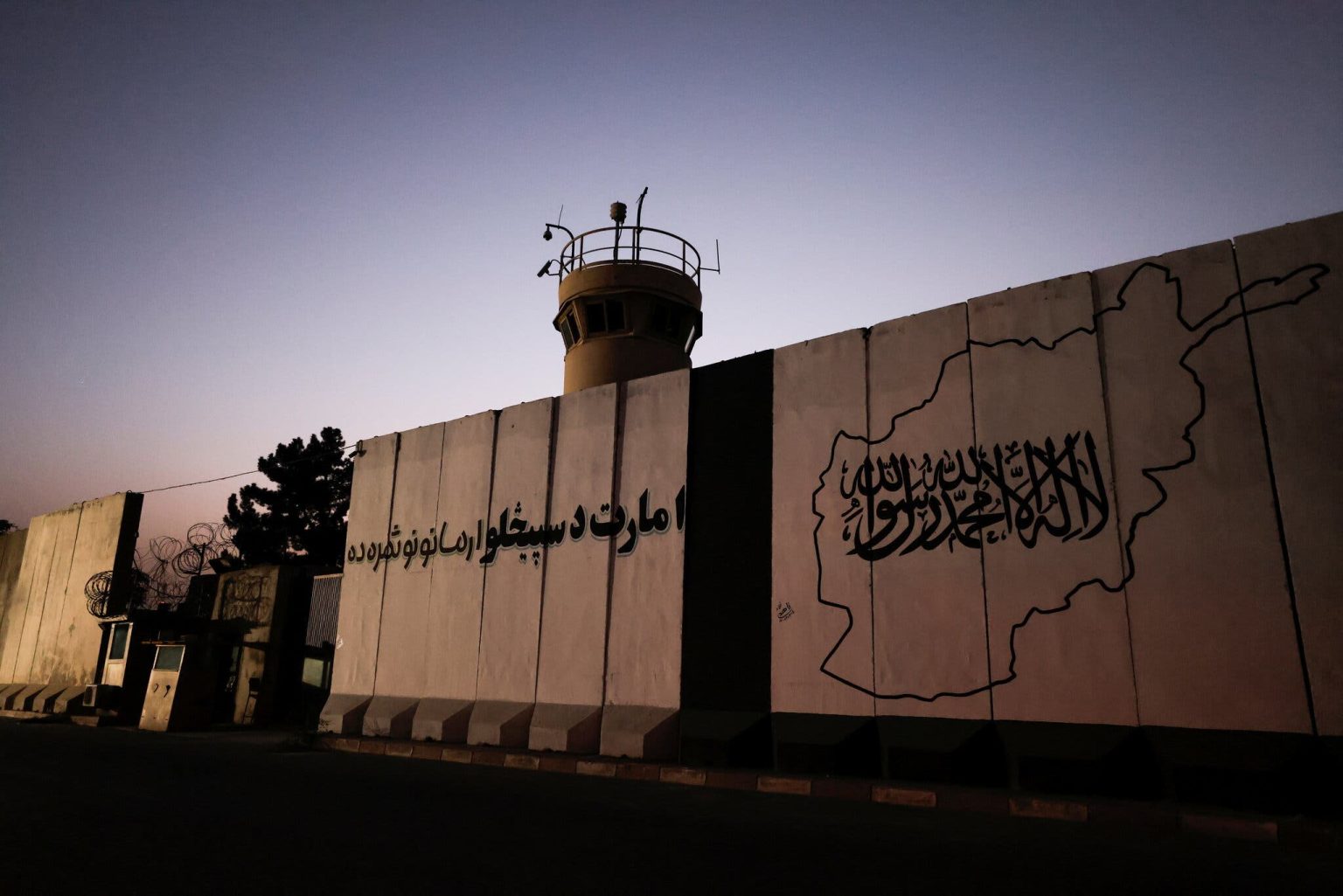This post was originally published on 3rd party site mentioned on the title ofthis site

Regional and global countries are deeply concerned about the extensive presence of terrorist groups and their collaboration with the Taliban. Despite the Taliban’s repeated assertions of cutting ties with regional and global terrorist organizations, such as al-Qaeda, since assuming control of Afghanistan, numerous reports from the UN Security Council and other international bodies indicate otherwise. These reports suggest that not only do the Taliban maintain their connections with terrorist groups, including al-Qaeda, but many of these organizations have also managed to restructure internally, recruit new members, and strategize operations.
Recently, the Russian Defense Minister stated that Afghanistan continues to be the main source of instability in Central Asia. The former head of the National Directorate of Security of Afghanistan also noted that many ISIS fighters are connected with the Taliban, and this group has extensively infiltrated the Taliban regime, especially within the Taliban’s security and intelligence agencies. According to him, the Taliban lack the capability and commitment to fight ISIS and continue to host al-Qaeda, members of the Pakistani Taliban (TTP), and other global terrorist groups.
Andrey Belousov, the Russian Defense Minister, speaking at the Council of Defense Ministers of the Collective Security Treaty Organization (CSTO) in Kazakhstan, stated that Afghanistan remains the primary source of instability in Central Asia. He mentioned that various extremist groups have established a foothold in Afghanistan.
The Russian Defense Minister expressed concern about the expansion of terrorist group activities beyond Afghanistan and said these groups aim to spread their ideologies in Central Asian republics.
Russian news agency RIA Novosti quoted this senior security official, reporting that given the situation in Afghanistan, it is necessary to strengthen the country’s borders with Tajikistan and implement other measures to stabilize the region.
Andrey Belousov said, “The key issue is that we are now on the front line. The situation on the southern borders of the Collective Security Treaty Organization member states is very challenging. Moreover, the situation and trends in Afghanistan are getting worse. We are monitoring them and know how to handle them; however, all this requires our attention, increased cohesion, and combat readiness.”
Meanwhile, Sergey Lavrov, the Russian Foreign Minister, stated that Moscow is planning to remove the Taliban from the list of terrorist organizations.
Previously, Kamchybek Tashiev, the head of the State Committee for National Security of Kyrgyzstan, also said at a security meeting of the Commonwealth of Independent States in Bishkek that “the presence of terrorist groups in Afghanistan” threatens the borders of these countries. He mentioned that an increasing number of terrorist groups in northern Afghanistan pose a threat to the security of the southern borders of the Commonwealth of Independent States.
At the same time, Ahmad Zia Siraj, the former head of the National Directorate of Security of Afghanistan, told the Combating Terrorism Center at West Point (CTC) that unlike other parts of the world where tensions between Western and Eastern powers are escalating daily, the United States, the United Kingdom, China, Russia, and Iran have assisted the Taliban in combating the ISIS Khorasan (IS-K).
The former head of the National Directorate of Security (NDS) of Afghanistan added that the UK and the US have provided the Taliban with information on ISIS fighters and operations in Afghanistan, and Iran has sent advisors to help the group in their fight against ISIS. Despite all these efforts and the sharing of information and experiences by key international players, the Taliban have not been able to combat ISIS Khorasan effectively.
Mr. Siraj emphasized that despite the Taliban’s claims of suppressing ISIS and denying its presence, none of the prominent ISIS leaders have been captured or killed. He stated that all significant ISIS leaders are still alive and have shifted their focus more toward activities outside Afghanistan. He clarified that ISIS operates a regional network in Pakistan, Sri Lanka, India, the Maldives, Bangladesh, and Central Asia, and the leader of this regional network, Salahuddin, has a close and friendly relationship with Shahab al-Muhajir, the leader of ISIS Khorasan.
The former head of NDS added that ISIS is attempting to carry out more attacks in Moscow and Iran. According to him, ISIS has limited its attacks in Afghanistan to those of higher quality, successfully eliminating some key Taliban members.
This senior security official from the previous government stated that ISIS has increased its recruitment process, and the recruitment of its fighters is very rapid. He mentioned that four thousand ISIS members, who the previous government detained, were released by the Taliban when they took over Afghanistan. He emphasized that ISIS has sent a message to its supporters worldwide that Afghanistan under Taliban rule is a safer and better place than Syria, Iraq, and other parts of the world, urging them to come to Afghanistan.
Mr. Siraj added that al-Qaeda has also adopted this approach and has called on all its followers worldwide to come to Afghanistan.
The former head of the National Directorate of Security explained that ISIS has infiltrated the Taliban ranks, particularly in the ministries of defense, interior, and intelligence, gaining awareness of the Taliban’s counter-efforts through these infiltrators. He noted that the presence of this group is currently felt in the regions of Kunar, Nuristan, and Nangarhar.
In this discussion, Mr. Siraj stressed that the Taliban cannot fight ISIS. According to him, during the previous government, there was significant collaboration between the Taliban and ISIS, and some connections still exist between certain ISIS fighters and Taliban intelligence.
Drawing from his experience, the former head of NDS stated that ISIS fighters exhibited “high commitment” to the group’s objectives. A book published by Shahab al-Muhajir, the current leader of the group in Afghanistan, has been distributed to all group members, detailing how to act during operations, after operations, and during interrogation and arrest.
Mr. Siraj added that decision-making within ISIS was “highly decentralized.” He noted that a council made the main decisions of the group of six ISIS leaders. He stressed that whenever one of the council members was killed or captured, the remaining members continued their mission without delay, and the group’s units carried on their assigned tasks without hesitation.
The former head of the National Directorate of Security of Afghanistan emphasized that currently, not only ISIS is present in Afghanistan, but many terrorist groups operate under Taliban rule. All these groups use similar tactics, and information flows quickly among them, warranting concern for all of them.
Relationship Between the Taliban and Al-Qaeda
The former head of the National Directorate of Security has stated that the Taliban, as the main ally of al-Qaeda, now controls the economy. According to him, global jihadist groups have found the opportunity to regroup and strengthen themselves, compensating for the losses they have suffered over the past 20 years and preparing for future attacks.
Mr. Siraj emphasized that al-Qaeda while operating in countries such as Yemen and Somalia, has turned Afghanistan into its command and control center. He added that al-Qaeda members are currently working as advisors within Taliban-controlled ministries.
The former head of NDS stressed that the Taliban have issued Afghan passports to al-Qaeda members. According to Siraj, “A large number of prominent Taliban figures are more al-Qaeda than Taliban.”
Mr. Siraj mentioned that Qari Baryal, the Taliban governor in Kapisa province, Mawlawi Noor Jalal, the current acting head of the Ministry of Public Health under Taliban control, and former deputy minister of interior, Mohammad Agha Hakim, the Taliban governor in Panjshir province, and Tajmir Jawad, the first deputy head of Taliban intelligence, are key al-Qaeda figures within the Taliban regime.
Previously, the Hasht-e Subh Daily, in a separate report, found that ISIS has a presence in most parts of Afghanistan. According to the report’s findings, the widespread presence of ISIS in Afghanistan has deeply concerned the Taliban.
You can read the Persian version of this daily report here:
میزبانی طالبان از تروریستان بینالمللی؛ افغانستان منبع بیثباتی منطقه و جهان است | روزنامه ۸صبح




